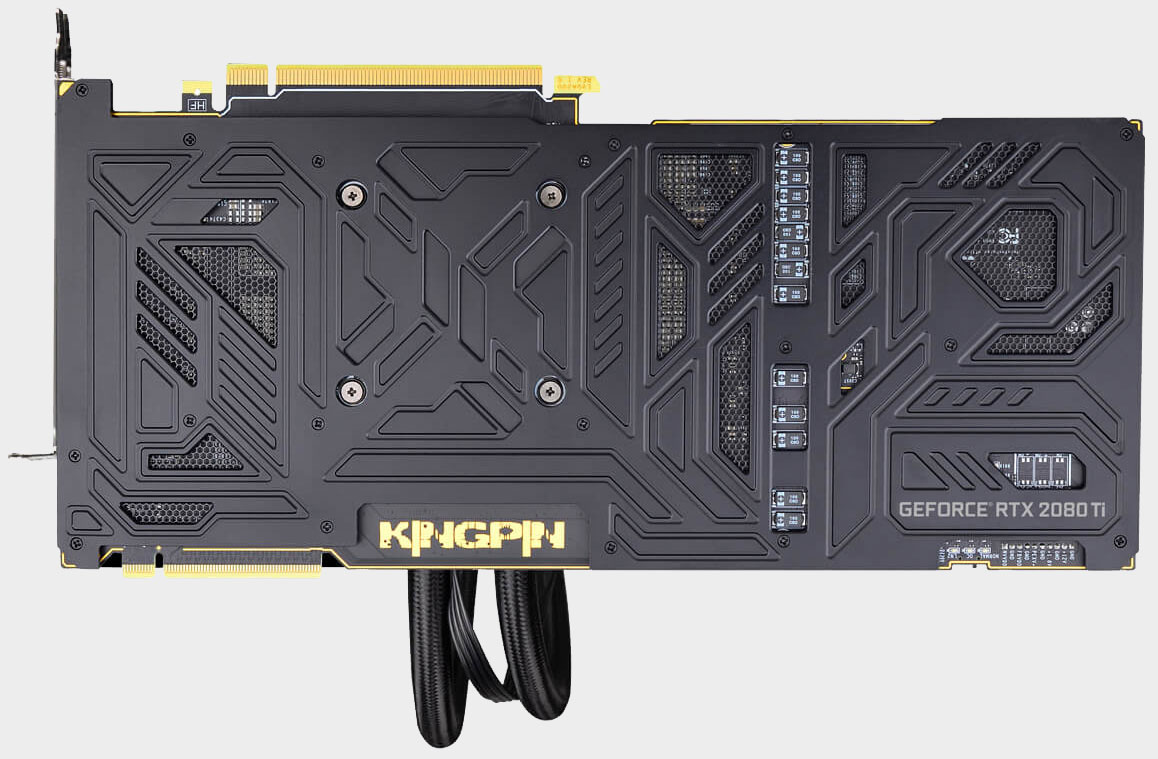This RTX 2080 Ti has an OLED display and AIO liquid cooler, costs $1,900
You'll need three 8-pin PCIe power connectors to run this thing.

For anyone who can afford it, the GeForce RTX 2080 Ti is the best graphics card for gaming, offering comparable performance to a Titan RTX for around half the price. That depends on the specific model, though. Case in point, EVGA today launched its GeForce RTX 2080 Ti Kingpin Gaming card, a premium GPU with a price tag to match—$1,899.99, if you're an EVGA Associates member.
If you're not an Associates member, you can't buy it. As we reported last month, the Associates program is a new thing that incentivizes EVGA customers to peddle its products by sharing a unique code. The buyer who uses the code gets a discount on most items, and the "Associate" gets a kickback in the form of EVGA bucks (in-store currency).
Apparently one of the perks is gaining exclusive access to a graphics card that costs $1,899.99. It's a hefty markup over a regular or Founders Edition RTX 2080 Ti for sure, though in fairness, there is quite a bit that separates the Kingpin model from other cards.
This is a card that is designed for overclocking. It has a 16+3 phase VRM design with integrated "Smart Power Stages, each capable of supplying up to 60 amperes of continuous current." That basically means it was built to remain stable while being pushed.
Three 8-pin PCIe power connectors supply the necessary current. It also has three BIOSes—one each for Normal, OC, and Extreme LN2 modes. Regardless of which mode you're running in, you can keep tabs on temps and vitals through an array of a dozen sensors.

This card is also EVGA's first one to feature a built-in OLED panel along the top. This can be used for show, or to display real-time stats, such as voltages, temps, clockspeeds, power consumption, and GPU utilization.
An all-in-one liquid cooler with a full-coverage waterblock and 240mm radiator provides cooling, along with a single fan on the shroud.
Keep up to date with the most important stories and the best deals, as picked by the PC Gamer team.
Out of the box, the Kingpin card boosts to 1,770MHz. That's the same as a Titan RTX. Nvidia's RTX 2080 Ti Founders Edition boosts to 1,635MHz, while the reference blueprint calls for a 1,545MHz.
That's not a ginormous overclock, especially for the price. However, anyone who plunks down $1,899.99 on this card and then doesn't tinker with the settings is doing it wrong.
Paul has been playing PC games and raking his knuckles on computer hardware since the Commodore 64. He does not have any tattoos, but thinks it would be cool to get one that reads LOAD"*",8,1. In his off time, he rides motorcycles and wrestles alligators (only one of those is true).


